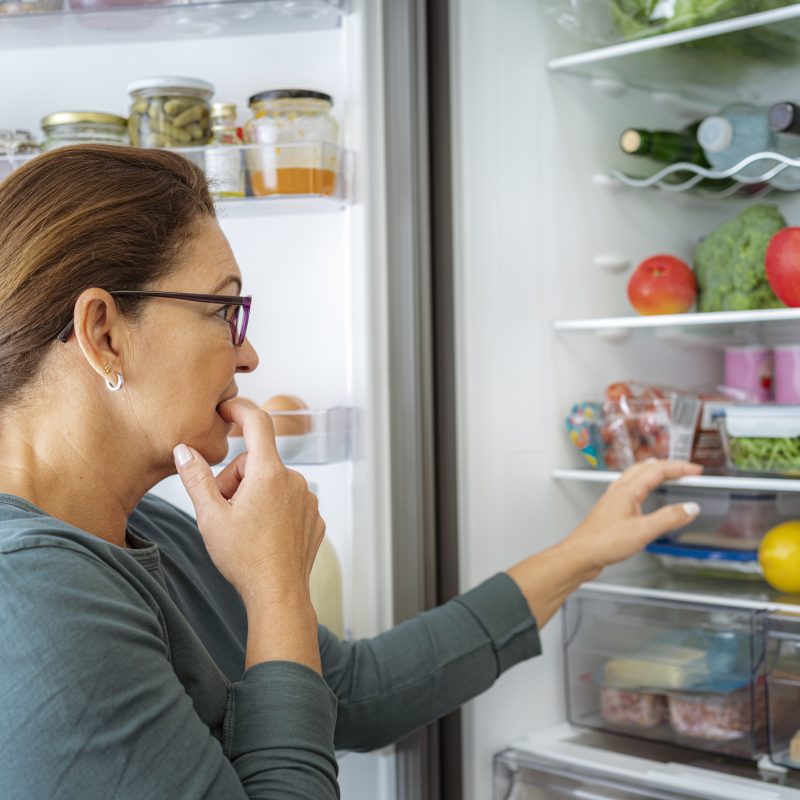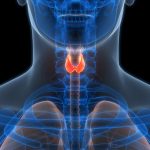
The female menstrual cycle can have a profound effect on nearly every area of women’s lives, including their metabolism. Women often report particular food cravings at various points during a typical monthly cycle. Read on to learn the science and physiology behind these cravings, as well as the healthiest ways and times to combat them.
Food Cravings and Hormones
Most women tend to increase their caloric intake during the luteal phase of the monthly cycle, which directly follows ovulation and lasts until menstruation begins. During this phase, the body experiences a drop in estrogen levels paired with an increase in circulating progesterone, the latter known to stimulate appetite and cravings. While the basal metabolic rate (BMR) decreases during menstruation, it rises to its peak in the days leading up to this, potentially further contributing to one’s increased appetite and food intake. During this luteal phase, women commonly express a preference for carbohydrates, particularly bothersome for those who deal with more intense pre-menstrual symptoms (PMS).
The Insulin Factor
According to integrative medicine physician Amy Shah, M.D., “You have much more carbohydrate tolerance—insulin sensitivity—in the first half of your cycle, which is called the follicular phase, or days 0 through 14. It seems that the estrogen helps keep away insulin resistance. Healthy or even unhealthy carbs are just better tolerated then.”
In one 3-month study, women with higher estradiol during the luteal phase of their menstrual cycles reported consuming more carbohydrate-rich foods; they also experienced increased cravings for sweet foods. Insulin levels rise during the early luteal phase.
Starchy, simple-carbohydrate foods may trigger the release of serotonin, a neurotransmitter that can improve mood and potentially alleviate that “feeling blue” sensation so many women experience along with other premenstrual symptoms. However, a few nutrition tips can go a long way toward minimizing the consumption of excess empty calories. When those cravings hit, rather than reaching for simple carbs — chips, bread, pasta, cookies — choose complex carbohydrate foods that increase serotonin but also provide fiber for longer satiety. These include items such as beans, brown rice, lentils, spaghetti squash and unprocessed oats.
Do Women Burn More Calories When Menstruating?
While the interplay between hormones, insulin and appetite seems a bit confusing, so, too, does the question of caloric burn. During a woman’s period, the hormone levels reach their lowest points. Estrogen and progesterone levels decrease, and an interesting manifestation of all of this equates to a faster recovery rate during bouts of exercise. This dynamic would tend to make that extra set of reps or a post-work run much easier to handle. It sounds good…but many women simply do not feel an inclination to act on this during their period.
At other points during the month, however, particular during the luteal phase, approximately a week prior to the onset of a period, the body’s BMR increases by 10-20%. Studies suggest that a woman’s body uses an extra 100-300 calories a day during this phase. This helps explain the increased appetite. Dietitian Ro Huntriss tells us ““Listening to your hunger cues and appetite is always a good thing to do, as it can help us to fuel our body for the activity it is doing as well as understand when we are full.” As mentioned above, Huntriss endorses whole grain carbohydrates as well as protein-rich food sources; these provide quality fuel while also helping to manage cravings and stabilize the body’s blood sugar levels.
Stephanie Gray, a functional medicine expert and women’s health specialist, says that even though the female body might exhibit less insulin resistance during the first half of the monthly cycle, the caloric needs increase in the second half of the cycle, known as the luteal phase. “Think of it this way: Your body is under higher demands with ovulation, and your ovaries are working to spit out more hormones, specifically progesterone. Some may argue you need more calories in general during these weeks, including more amino acids, more healthy fats, and yes, even more carbs.”
How Exercise and “Cycle Syncing” Can Help
While the body does not necessarily burn more calories when menstruating, exercising around the different phases of your menstrual cycle does affect the body in positive ways. Fostering the release of endorphins with a moderate cardio workout – aerobics, cycling classes, swimming and running — can help counterbalance mood swings; and gentle stretching during a yoga or Pilates class can help mitigate bloating and its accompanying cramps.
The concept behind cycle syncing reflects an approach to fitness that involves tailoring exercise routines, nutrition, and self-care practices to align more comfortably and suitably with the different phases of a woman’s menstrual cycle.
As we have mentioned, each phase of the menstrual cycle brings unique hormonal shifts and energy levels, affecting mood, metabolism, and overall well-being. Cycle syncing takes these variations into account, allowing an easy and seamless adaptation of workouts, dietary choices, and self-care activities to best support the body during each phase of the cycle.
As we have honed in on the BMR and hormones/cravings/food intake of the luteal phase, this discussion centers on the best approaches to exercise and emotions during this time.
Choosing workouts that prioritize stability, balance, and relaxation seem to work well. Experts suggest taking advantage of strength training, barre exercises, and mindfulness activities during the luteal phase, all of which help counteract and work along with the frequent energy fluctuations.
We must bear in mind that, for many women, the menstrual cycle can vary from month to month. Some individuals deal with menstrual inconsistencies due to diet, age, excessive exercise, hormonal imbalances or medications. The suggestions offered here, though based on research studies, may not align with everyone. Try some of the tips and decide what works best for you!
References
https://nudenutritionrd.com/craving-carbs-before-your-period-is-there-any-science/
https://www.runnersworld.com/uk/nutrition/a42433202/nutrition-through-your-menstrual-cycle/
https://www.psu.edu/news/research/story/hormone-myths
https://www.healthline.com/health/period-cravings#pregnancy
https://faseb.onlinelibrary.wiley.com/doi/abs/10.1096/fasebj.30.1_supplement.418.6






